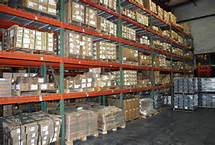How do I know how much stock to carry?
The short answer in principle is: the lower the investment in stocks the better.
Apart from buffer stocks that businesses sometimes need in case of shortages of supply and strategic stocks in case of war, sudden changes in demand and so on, modern stock control theory tells us to minimise our investment in stocks.
Many business owners struggle with developing a system of stock control, so here is a basic tip:
Let’s see how the Furniture Warehouse behaves in this respect.
The formula for this ratio is:
| Stock Turnover | = | Average Stocks |
| (Cost of Sales/365) |
Furniture Warehouse | 31 March 2012 | 25 March 2011 |
| $’000 | $’000 |
| Cost of sales | 830,126 | 505,738 |
| Stock | 52,437 | 51,842 |
Stock Turnover Ratio for the Furniture Warehouse | ||
| 31 March 2012 | 52,437 830,126 / 365 | 23.06 days |
| 25 March 2011 | 51,842 505,738 / 365 | 37.42 days |
- Firstly, the result of this calculation is that the answer is instantly in terms of the number of days, on average, that the stocks are held in the business.
- Secondly, we use the cost of sales figure because stocks are bought and shown in the profit and loss account and the balance sheet at cost; so we need to compare like with like.
- Thirdly, we only have two years’ worth of stock information, so we can’t use the average stock for both years as we should do according to the formula. Never mind, even though the answer won’t be 100% spot on, it will give us a very good estimate of how stock control is going
How can we interpret this ratio? With a result of 23.06 days, we can imagine that we bought our $52,437,000 worth stocks of raw materials or whatever they were on 1st January 2012. We then know that we ran out of those raw materials on 1 + 23.06 days = just into 25th January.
Similarly with the result of 37.42 days, if we bought our $51,738,000 worth of raw materials on 1st January, we would run out and have to buy some more on 7th February.
This ratio has fallen from 37 days to 23 days over the two years and that is probably a good thing. If there’s less stock to worry about, lower investment in stocks meaning that the money they used to have tied up in the stock room is now free to spend somewhere else.
In fact, stocks have remained at around $52 million as we mentioned before, but the cost of sales has increased by 64% over the two years. Put these two facts together and that explains the improvement in this ratio.
A great result for the business!
Don’t forget that this example assumes a consistent trend of stock movement during the course of the year. These figures can be broken down further to show cyclical changes during the year, and likely stock requirements during ‘peak’ and ‘off peak’ periods.
Remember, there is no better cure to stock ‘hassles’ than buying stock that customers want. There is no better way of finding out than to ASK customers at the counter or by way of survey. Did you know an inexpensive website can survey hundreds of your customers quickly and effectively?
Get this simple message out to your clients ASAP!!!
Related Posts
- 2022-23 October Federal Budget SMSF Recap ( October 26, 2022 )
- Downsizer contributions; the scheme helping retirees bolster their super balance ( April 13, 2022 )
- Conditions of Release ( February 28, 2022 )
- The age-old debate; Corporate or Individual trustees ( February 4, 2022 )
- Pink Diamonds: Collectable or Precious Metal? ( November 15, 2021 )
- Let’s Talk Property Valuations ( September 10, 2021 )
- How to invest in Cryptocurrency for your SMSF – The right way ( August 16, 2021 )
- How to get SuperStream ready! ( August 6, 2021 )

